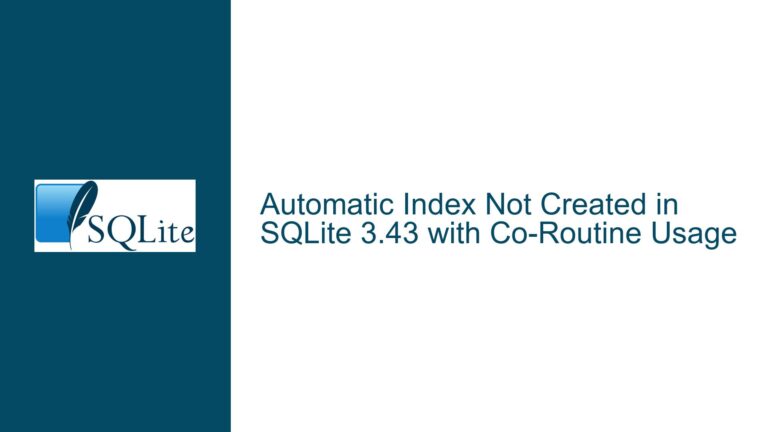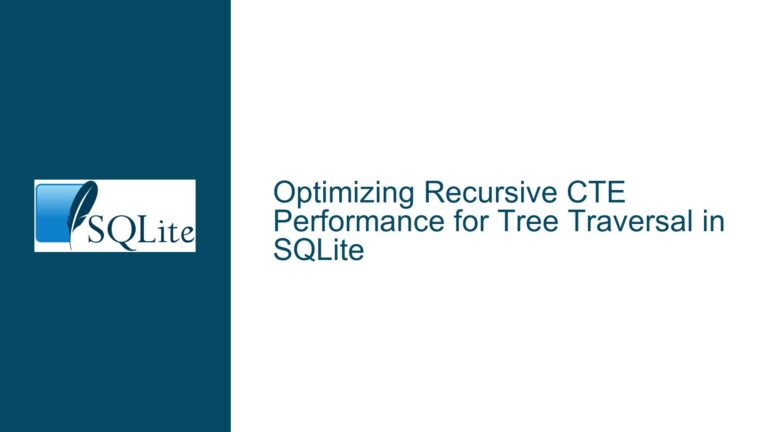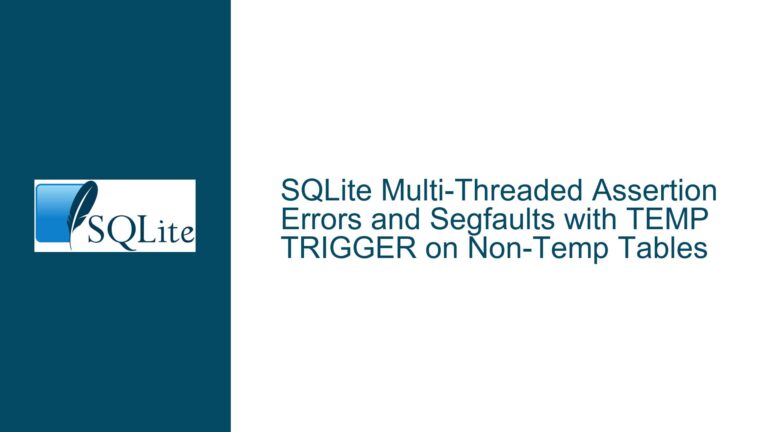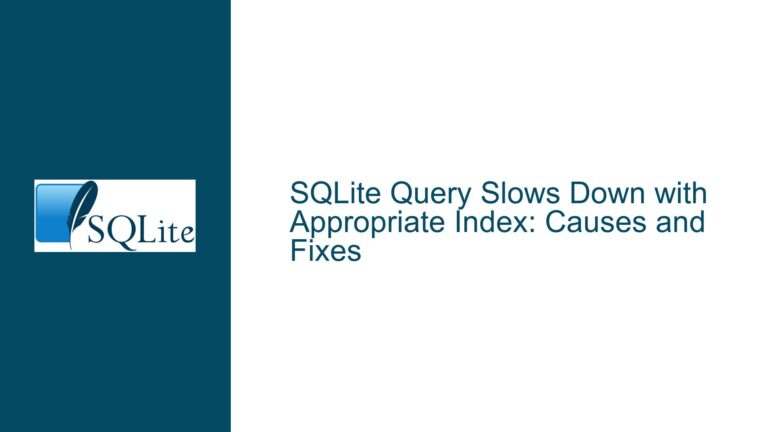FTS5 Search Performance Degradation Due to Excessive REPLACE INTO Operations
Understanding FTS5 Index Performance Degradation Over Time
Full-Text Search version 5 (FTS5) in SQLite is a powerful tool for implementing fast and efficient text search capabilities. However, as with any database indexing mechanism, its performance can degrade over time due to various factors. In this case, the primary issue revolves around the performance deterioration of an FTS5 index after a significant number of REPLACE INTO operations. The index, which initially performs well, starts to slow down noticeably within a short period, with query times increasing from 0.13 seconds to 0.24 seconds in just 70 minutes. This degradation is exacerbated by a high volume of unnecessary REPLACE INTO operations—approximately 6,000 per hour—due to a flaw in trigger design.
The FTS5 index in question is a "contentless_delete" type, meaning it does not store the original content but only the indexed terms. This type of index is particularly sensitive to frequent updates, deletions, and insertions because it relies on maintaining a consistent state of the indexed terms without the underlying content. The performance degradation is likely due to the accumulation of tombstones (markers for deleted or replaced entries) and the fragmentation of the index structure caused by the high volume of REPLACE INTO operations.
The Impact of REPLACE INTO and UPDATE Operations on FTS5 Indexes
The distinction between REPLACE INTO and UPDATE operations in FTS5 indexes is subtle but significant. Both operations result in the creation of tombstones for the old entries unless the secure-delete option is enabled. Tombstones are markers that indicate that a particular entry has been deleted or replaced. Over time, these tombstones accumulate, leading to increased index fragmentation and slower query performance. The secure-delete option, when enabled, removes the old entries from the index entirely, which can help mitigate this issue. However, enabling secure-delete comes with its own trade-offs, such as increased I/O operations and potential performance overhead.
In the context of the FTS5 index, REPLACE INTO and UPDATE operations are functionally equivalent in terms of their impact on the index structure. Both operations result in the creation of tombstones unless secure-delete is enabled. This means that the performance degradation observed is not due to the specific type of operation (REPLACE INTO vs. UPDATE) but rather due to the high volume of such operations and the resulting accumulation of tombstones.
Strategies for Mitigating FTS5 Index Performance Degradation
To address the performance degradation of the FTS5 index, several strategies can be employed. These strategies focus on reducing the accumulation of tombstones, optimizing the index structure, and minimizing the impact of frequent updates, deletions, and insertions.
1. Optimize Trigger Design to Reduce Unnecessary Operations: The first step in mitigating performance degradation is to address the root cause of the issue—the flawed trigger design that results in 6,000 unnecessary REPLACE INTO operations per hour. By correcting the trigger logic, the number of unnecessary operations can be significantly reduced, thereby reducing the rate at which tombstones accumulate. This will not only improve performance in the short term but also delay the onset of performance degradation when the index is subjected to real insertions and deletions.
2. Adjust Merge Settings to Improve Index Maintenance: The FTS5 index relies on a process called merging to consolidate fragmented segments and remove tombstones. The default merge settings may not be sufficient to handle the high volume of operations in this scenario. Adjusting the merge settings, such as increasing the deletemerge parameter, can help improve the efficiency of the merge process. The deletemerge parameter controls the threshold at which segments containing tombstones are merged. By increasing this threshold, more tombstones can be removed in each merge operation, reducing index fragmentation and improving query performance.
3. Implement Periodic Manual Merges and Optimizations: In addition to adjusting the merge settings, periodic manual merges and optimizations can be performed to maintain the index’s performance. The OPTIMIZE command in FTS5 initiates a full merge of all segments, effectively removing all tombstones and consolidating the index. Running this command periodically—for example, hourly or daily—can help maintain the index’s performance over time. Alternatively, a manual merge can be initiated by specifying a negative merge parameter, which forces a merge of all segments regardless of the current merge settings.
4. Enable Secure-Delete to Eliminate Tombstones: Enabling the secure-delete option can help eliminate tombstones entirely by removing old entries from the index during REPLACE INTO and UPDATE operations. This can significantly reduce index fragmentation and improve query performance. However, enabling secure-delete comes with its own trade-offs, such as increased I/O operations and potential performance overhead. It is important to carefully evaluate the impact of enabling secure-delete on the overall system performance before implementing this change.
5. Monitor and Analyze Index Performance: Regular monitoring and analysis of the FTS5 index’s performance can help identify potential issues before they lead to significant degradation. Tools such as SQLite’s EXPLAIN QUERY PLAN can be used to analyze the execution plan of queries and identify potential bottlenecks. Additionally, monitoring the size and fragmentation of the index segments can provide insights into the effectiveness of the merge process and the impact of frequent operations on the index structure.
6. Consider Alternative Indexing Strategies: If the performance degradation persists despite implementing the above strategies, it may be necessary to consider alternative indexing strategies. For example, using a different type of FTS5 index, such as a "content" or "external content" index, may provide better performance in scenarios with frequent updates, deletions, and insertions. Additionally, partitioning the index or using multiple smaller indexes may help distribute the load and reduce the impact of frequent operations on a single index.
In conclusion, the performance degradation of the FTS5 index in this scenario is primarily due to the high volume of REPLACE INTO operations and the resulting accumulation of tombstones. By optimizing the trigger design, adjusting merge settings, implementing periodic manual merges and optimizations, enabling secure-delete, monitoring index performance, and considering alternative indexing strategies, the performance of the FTS5 index can be maintained and improved over time. Each of these strategies should be carefully evaluated and implemented based on the specific requirements and constraints of the system to achieve the best possible performance.






